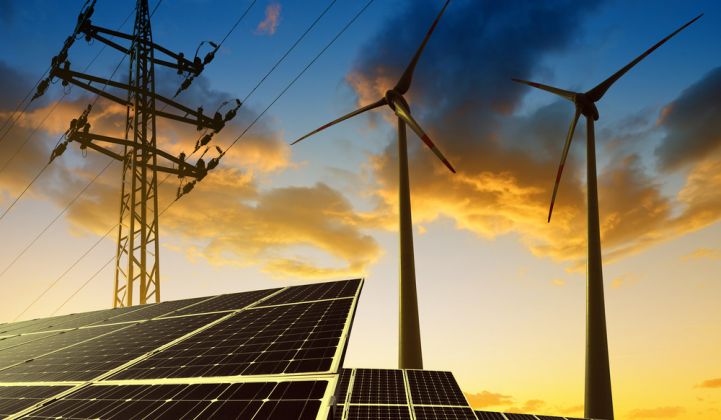The halls of the university these past two months have been filled with conversations between stunned colleagues and confused students about President-elect Trump’s potential energy agenda.
Trump’s remarks have earned him the labels of “climate denier” and “clean coal” supporter, and now the President-elect’s actions strongly suggest a bias for fossil fuels and disinterest in the development of clean energy during his term. Nonetheless, during his interview with The New York Times editorial board in November, Mr. Trump did acknowledge that human activity might be connected to climate change, while asserting that “you can make lots of cases for different views.”
We have seen Trump announce plans to appoint former Texas governor Rick Perry, a self-proclaimed climate skeptic, as Secretary of Energy. Although when Perry was governor, he did sign legislation that enabled the rapid expansion of wind power in Texas. ExxonMobil CEO Rex Tillerson, who has longstanding ties to Big Oil, is Trump’s choice for Secretary of State.
In December, members of Trump’s transition team issued a questionnaire to the DOE asking probing questions about topics such as basic vs. applied research, nuclear reactors, grid modernization and energy forecasting. While it is common for transition teams to seek such information, also asking DOE to identify the specific employees who have participated in climate change-related meetings certainly raised concerns. The past two months have created confusion and incited an element of fear in the energy R&D community, but right now our future is, in fact, unknown.
What we do know is that significant changes require time, money and cooperation. Executive orders cannot easily undermine existing agency rules. The Obama administration’s Clean Power Plan, for example, was a mammoth effort, and even though many major U.S. utilities have all but accepted the consequences, litigation and bureaucratic roadblocks continue to impede progress. Even with a Republican Congress and the potential for more conservatives on the Supreme Court, the Trump administration will not find big, abrupt changes easy to enact.
As members of the energy R&D community, we should be very concerned with the Department of Energy budget. Historically, the president has had some influence over DOE’s spending, but Congress ultimately decides budget levels and priority funding areas. Nonetheless, we might want to start by considering a few “safe bets” to position us well for our potential future.
First, Congress has demonstrated a strong commitment to ARPA-E, and since its support is likely to persist, we should continue to conceive of innovative, high-risk, high-reward energy technologies.
Second, Trump is likely to try to champion additional investment in fossil fuels, which could revive an interest in oil and gas R&D that was prevalent when the price of oil surged above $100 a barrel. Therefore, we should be ready to pitch relevant research ideas, such as sensors for methane detection, sustainable fracking fluids, or using big data to assess and improve well performance.
Third, we know that Trump intends to fight for a big American infrastructure investment. Although America’s electricity transmission and distribution grid has not been cited specifically, with some pressure from diverse interests, accelerating the transition to a more modern, secure, resilient and reliable grid could end up on the Trump agenda, resulting in some level of investment for smart grid R&D.
Fourth, the president-elect has articulated in no uncertain terms a commitment to reviving American manufacturing. Whether clean energy manufacturing passes the Trump test remains to be seen, but positioning ourselves for the possibility is wise, particularly by clearly demonstrating the corresponding benefits of onshore production and job creation. Another safe bet is that across all of these areas, public-private partnerships will be favored.
As members of the energy R&D community, we also need to make every effort to support and disseminate fact-based science about climate change and to affirm the importance of clean energy research and innovation. Last month, the House of Representatives Committee on Science, Space and Technology tweeted a deceptive article published by Breitbart News titled, “Global Temperatures Plunge. Icy Silence From Climate Alarmists.” The article was riddled with erroneous information that undoubtedly has been misconstrued by many, perhaps even our own president-elect. Now is not the time to take refuge in our laboratories.
We need to communicate effectively about climate change and the past decade’s success with clean energy technologies, illuminating the immense potential of our community to accelerate innovation. We need to continue to work collaboratively across universities, national laboratories and companies to build and sustain a strong research capacity focused on the development and deployment of clean energy technologies. We need to be advocates for investment in clean energy innovation as key to mitigating climate change and affecting positive economic transformation.
While the exact nature of what will unfold in the next four years of government support for energy R&D remains unknown, we must take advantage of the resources we have at our disposal and continue to work together to ensure a clean energy future. As scientists, engineers and innovators, we are the only ones who can.
***
Alexis Abramson is director of the Great Lakes Energy Institute at Case Western Reserve University. She is the former chief scientist at the Department of Energy Building Technologies Office.



